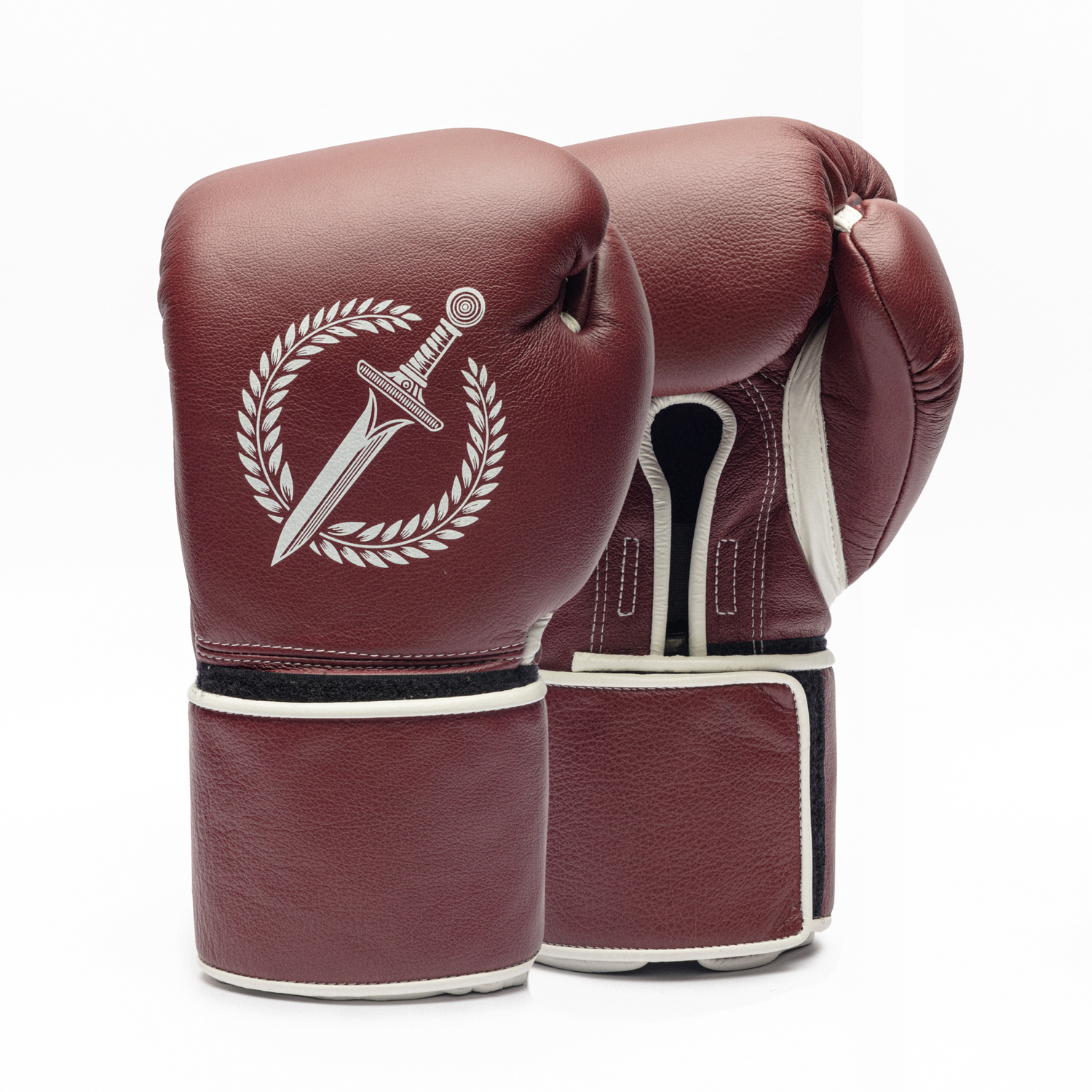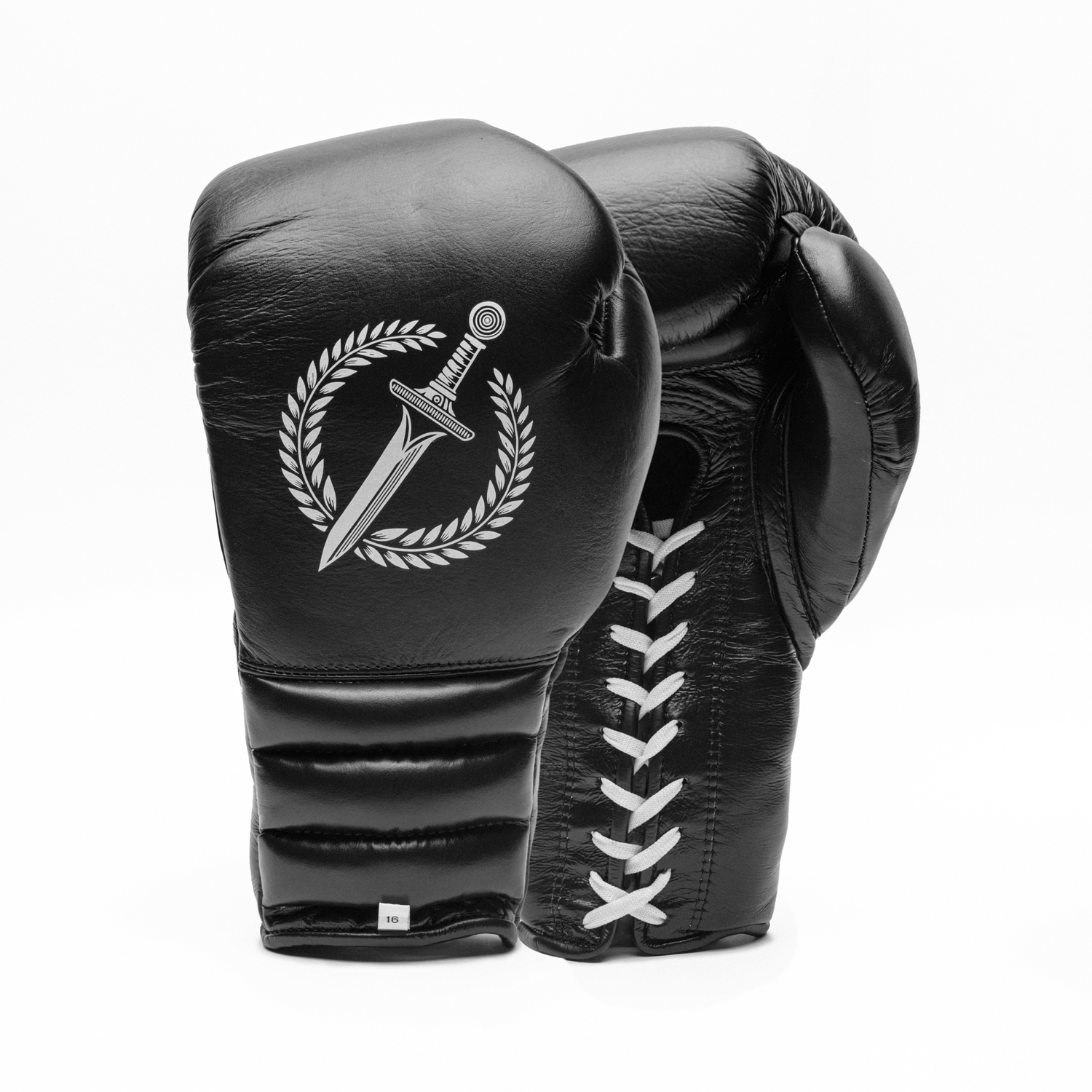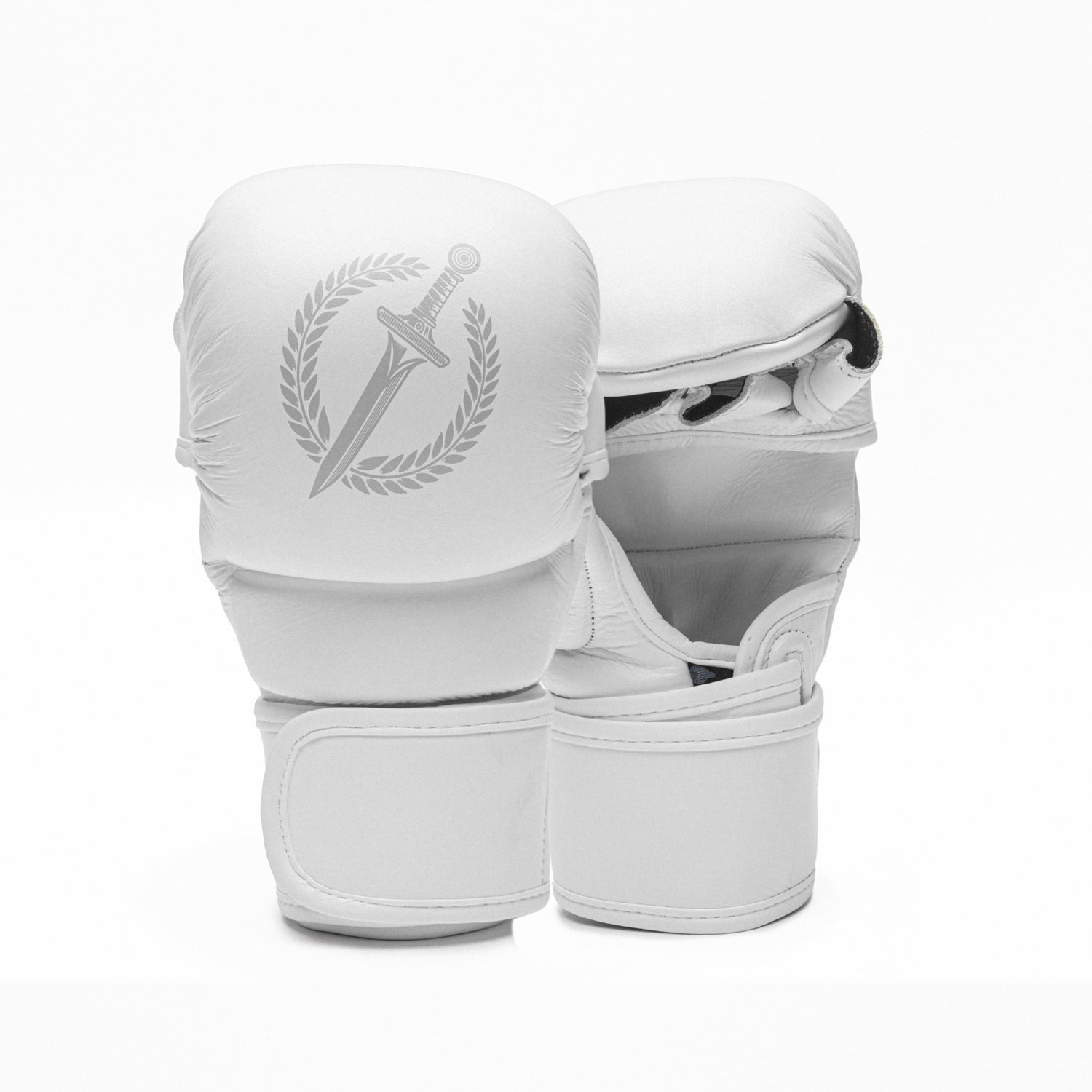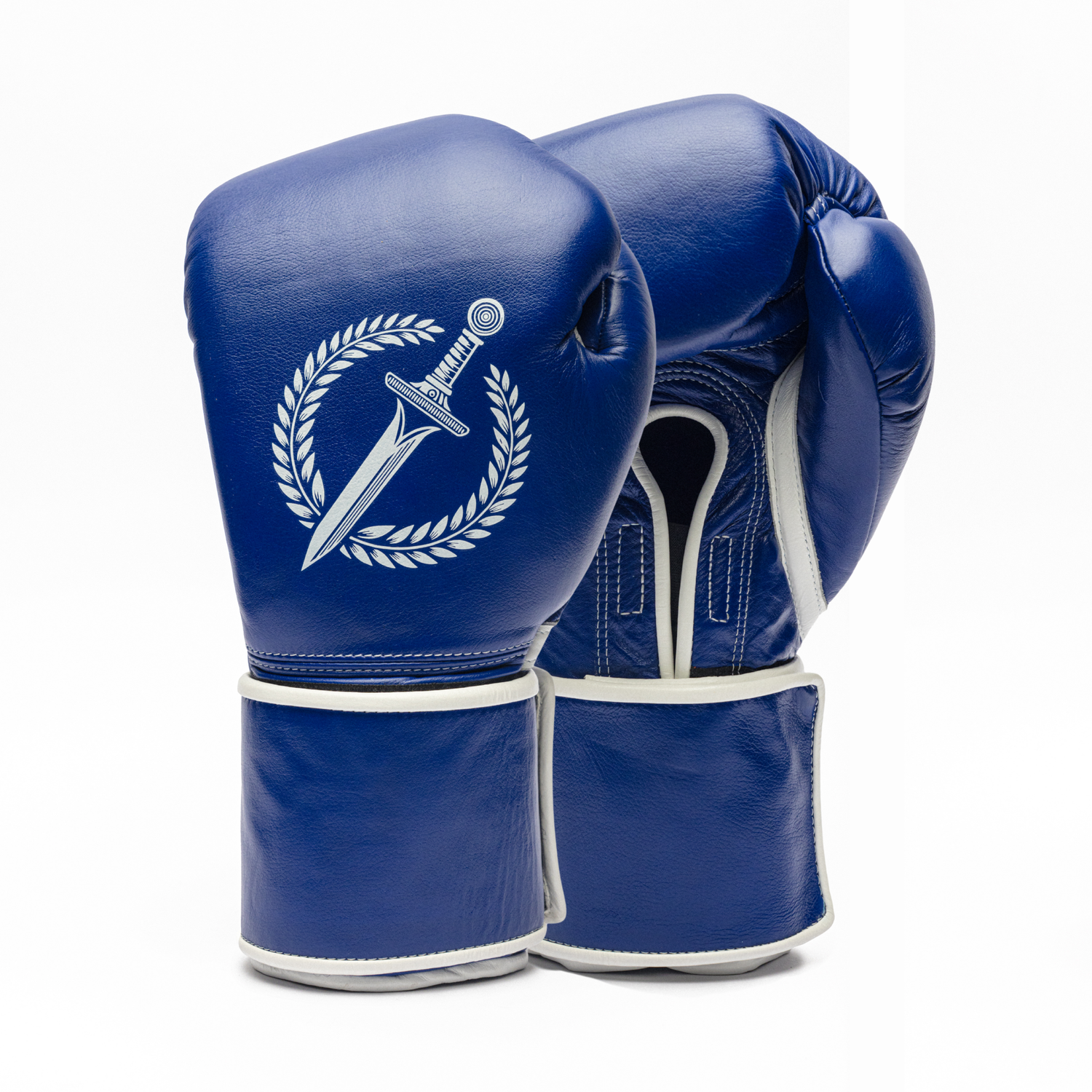Fight gloves have long been a staple in combat sports, serving not only to protect fighters' hands but also to add structure, safety, and regulation to bouts. Yet, the concept of gloves in fighting is far from modern.
The evolution of this iconic piece of gear spans thousands of years, from the brutal, bare-knuckle battles of ancient civilizations to the expertly engineered gloves used in today’s boxing, MMA, and Muay Thai.
Let’s take a fascinating dive into the history of fighting gloves and how they’ve shaped combat sports over time.

It took several centuries for fight gloves to be as beautiful and effective as they are today.
Ancient fighting: Bare knuckles and leather straps
The first evidence of hand protection in combat comes from 688 BCE in Ancient Greece when Pygmachia (an early form of boxing) was introduced to the Olympic Games. Contestants in these bouts wrapped their knuckles and wrists with leather straps called "Himantes."
A few earlies later, in Ancient Rome the concept of combat gloves became even more brutal. The Romans, famous for their bloodthirsty entertainment, incorporated Pugilatus into their gladiatorial games. Two fighters were stripped of their weapons and forced to fight with their fists wearing Caestus gloves - leather straps often embedded with metal studs, spikes, or iron plates to make the fight more brutal.
The purpose of Himantes and Caestus wasn’t to cushion blows or protect opponents. Instead, they were designed to reinforce the fighter's hands and amplify the damage inflicted, making the fights deadlier and more gruesome for the roaring crowds.
While they are far from the protective gloves used today, it marked the earliest attempts to alter and enhance the nature of combat through specialized hand coverings.

Medieval times: Weapon combat and small progress
The brutal contests of Pygmachia and Pugliatus began to lose their appeal as the ancient world gave way to the Middle Ages. In 393 AD, Roman Emperor Theodosius I issued a decree banning the practice of gladiatorial combat, condemning it for its pagan roots and extreme violence. With that, most advancements in hand-to-hand fighting gear came to a halt.
During this period, combat shifted away from regulated contests to more weapon-based warfare. While bare-knuckle brawls certainly took place, they were informal and largely unregulated.
The closest equivalent to fighting gloves in this era were the armored gauntlets worn by knights and soldiers. These sturdy, metal gloves were designed to protect the hands during sword fights and other forms of melee combat. While they were excellent for deflecting blows, they had no role in enhancing or regulating hand-to-hand combat.

Armored gauntlets. Can they be considered fight gloves? We don't think so...
18th and 19th century: The rise of boxing and the birth of modern gloves
The modern era of fighting began in 18th-century England with the emergence of bare-knuckle boxing.
These fights were held under what was known as Broughton’s Rules, a loose and often violent set of guidelines where fights could last until one fighter could no longer stand. There were no time limits, no standardized gloves, and minimal regulation. Fighting dirty was not uncommon, including tactics like wrestling and eye-gouging.
Jack Broughton and the first gloves
The shift toward safer boxing began with the legendary English fighter Jack Broughton. Often referred to as the "Father of English Boxing," Broughton was a highly skilled pugilist who became the champion of England in 1738. After witnessing a tragic incident in the ring where his opponent died from head injuries, Broughton decided the sport needed reform.
In 1743, he introduced a set of rules aimed at reducing unnecessary brutality. Most notably, Broughton developed the concept of "mufflers", the earliest form of padded gloves.
-
Mufflers were primarily designed for training, offering a layer of protection to prevent hand injuries.
-
They were made from soft leather and padding, but still far from the cushioned gloves we recognize today.
-
Despite their utility, mufflers were not widely adopted for actual competition. Fighters still preferred the prestige and toughness of bare-knuckle fights.
Broughton’s innovation, while significant, didn’t immediately change the culture of competitive boxing. The concept of wearing gloves in matches was seen by many as a sign of weakness. It would take more than a century for that perception to shift.
The Queensberry Rules: A defining moment
The real turning point in the history of fighting gloves came in 1867 with the introduction of the Marquess of Queensberry Rules, establishing boxing as a legitimate and safer sport.
While the rules covered various aspects of fair play and sportsmanship, one of their most impactful regulations was the mandatory use of padded gloves. This was the first time gloves were required for competitive matches, signifying the birth of modern boxing gloves. Here are some of the rules included:
-
Fighters had to wear padded gloves in all official matches, eliminating the dangers of bare-knuckle fighting.
-
Gloves had to weigh at least 6 ounces, offering protection for both the hands of the striker and the face of the opponent.
-
Fights were divided into three-minute rounds with one-minute breaks, further reducing the risk of severe injury.
The introduction of these rules not only reduced injuries but also shifted the focus toward technical skill and strategic fighting. Fighters could now refine their technique without the fear of lasting hand damage. Boxing evolved from a brutal display of endurance into a disciplined combat sport.

Mufflers, the first type of modern boxing gloves.
20th century: Global influence and the evolution of combat gloves
The Marquess of Queensberry Rules marked a revolution in the combat sports industry. Its introduction paved the way for the professionalization of glove-making.
New brands appeared to fill the market gap and provide the regulated padded gloves to fighters. This initiated a movement of continuous progress that still happens to this day: Multiple companies creating better designs, new types of padding and testing better technologies to help protect fighters' hands.
It didn’t take long for boxing gloves to transcend boxing itself. Their success influenced other martial arts to follow suit—most notably Muay Thai and Mixed Martial Arts (MMA).
Muay Thai: From Kaad Chuek to Western Gloves
In the early 20th century, traditional Kaad Chuek - hand wraps made of hemp rope -began to fade from Muay Thai bouts. As the sport moved toward international recognition, western-style gloves became the new standard.
This shift gave rise to a new industry of Thai glove manufacturers, who began designing gloves inspired by boxing models but adapted specifically for Muay Thai techniques, with tweaks like a more flexible palm for clinching and reinforced wrist support for repeated kicks and catches.
MMA: From Bare Knuckle to Mandatory Protection
MMA, much like early boxing, began as a bare-knuckle discipline. But as the sport evolved, the need for hand protection and reduced facial damage became a necessity - especially to guarantee its acceptance to a wider audience.
Japanese promotion Shooto was the first to adopt fingerless gloves in the mid-1980s, but the defining shift came only in 1997 when the UFC made gloves mandatory for all fighters. This decision is largely credited to matchmaker Art Davie and inspired by fighters like Melton Bowen, who voluntarily wore gloves at UFC 4 (1994), well before the rule change.
Today, nearly all MMA events around the world require gloves to ensure basic hand protection. While many fighters still dislike wearing them, MMA glove design continues to evolve each year, with significant improvements in comfort, fit, and safety.

Gloves are now a must for Boxing, kickboxing, Muay Thai and MMA.
A look into the future
Gloves have become a staple of combat sports and arguably their most iconic symbol. It’s hard to picture a future without them, at least anytime soon. While companies continue to innovate in ergonomics and injury prevention, we believe the next true revolution won't just be in function, but in meaning.
At Gladius, we envision a future where gloves aren’t just protective gear, but personal tokens. Vessels for fighters to express who they are and what they stand for. With endless possibilities in color, design, and detail, gloves will no longer be uniform. They’ll be unique reflections of a fighter’s identity, values, and story.
Soon, gloves won’t just tell you how someone fights. They’ll show you why they fight.

More than just protective gear. Gloves are also a symbol of the fighters' identity, style and stories that motivate him.
Final thoughts: The legacy of fighting gloves
From ancient Greek leather wraps to modern multi-layer foam designs, the journey of fighting gloves is a testament to the timelessness of combat sports.
When you step into the ring or onto the mat, remember your gloves are more than just protective gear. They’re part of a legacy that dates back thousands of years. Whether you’re a boxer, a Muay Thai fighter, or an MMA athlete, investing in the right gloves means honoring that history.





